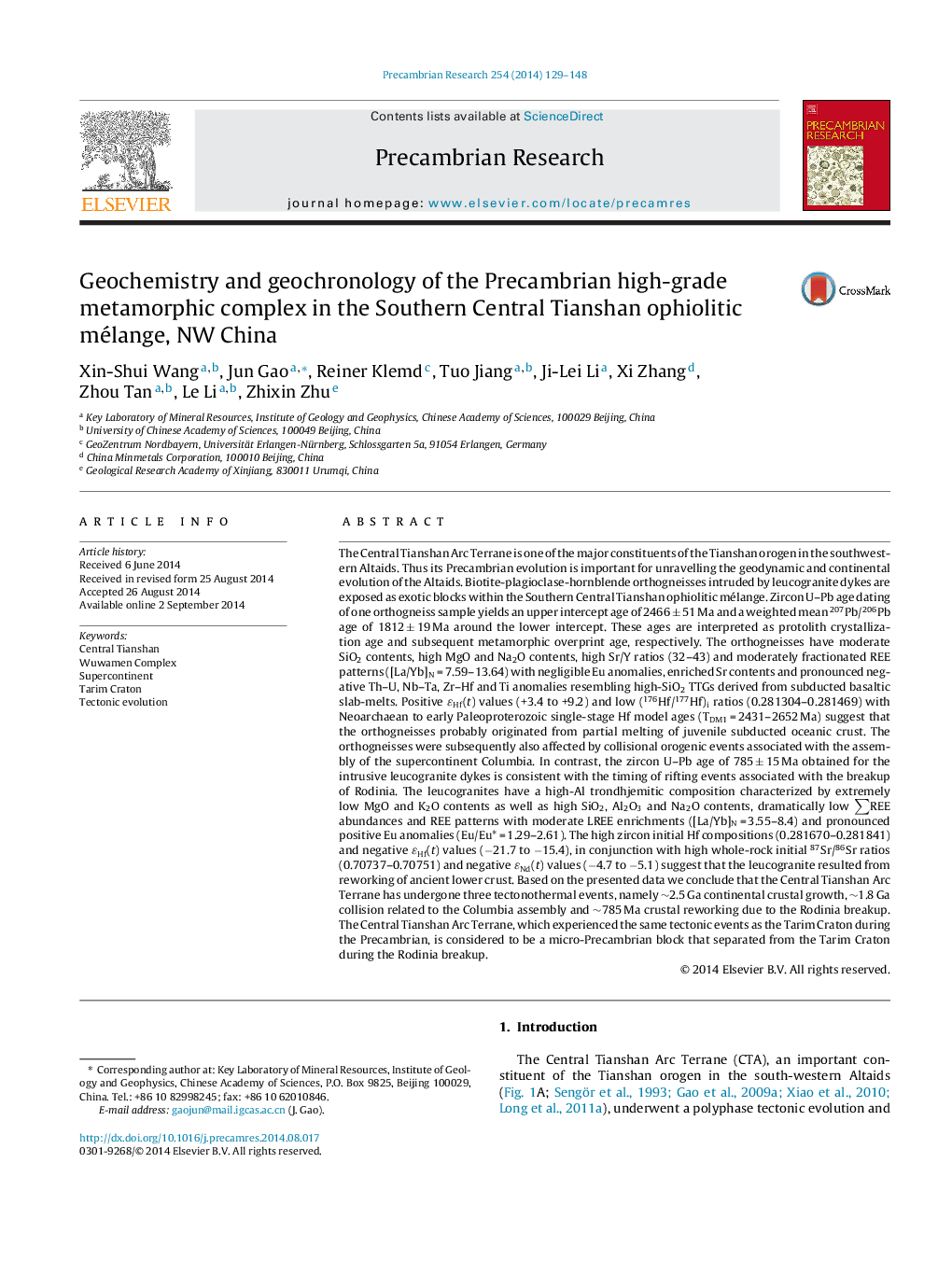| Article ID | Journal | Published Year | Pages | File Type |
|---|---|---|---|---|
| 4722870 | Precambrian Research | 2014 | 20 Pages |
•The Wuwamen Complex is a relic of the Central Tianshan Arc Terrane basement.•The CTA records three phases of global events at 2.5 Ga, 1.8 Ga and 785 Ma.•The CTA was part of the Tarim Craton during the Precambrian.
The Central Tianshan Arc Terrane is one of the major constituents of the Tianshan orogen in the southwestern Altaids. Thus its Precambrian evolution is important for unravelling the geodynamic and continental evolution of the Altaids. Biotite-plagioclase-hornblende orthogneisses intruded by leucogranite dykes are exposed as exotic blocks within the Southern Central Tianshan ophiolitic mélange. Zircon U–Pb age dating of one orthogneiss sample yields an upper intercept age of 2466 ± 51 Ma and a weighted mean 207Pb/206Pb age of 1812 ± 19 Ma around the lower intercept. These ages are interpreted as protolith crystallization age and subsequent metamorphic overprint age, respectively. The orthogneisses have moderate SiO2 contents, high MgO and Na2O contents, high Sr/Y ratios (32–43) and moderately fractionated REE patterns ([La/Yb]N = 7.59–13.64) with negligible Eu anomalies, enriched Sr contents and pronounced negative Th–U, Nb–Ta, Zr–Hf and Ti anomalies resembling high-SiO2 TTGs derived from subducted basaltic slab-melts. Positive ɛHf(t) values (+3.4 to +9.2) and low (176Hf/177Hf)i ratios (0.281304–0.281469) with Neoarchaean to early Paleoproterozoic single-stage Hf model ages (TDM1 = 2431–2652 Ma) suggest that the orthogneisses probably originated from partial melting of juvenile subducted oceanic crust. The orthogneisses were subsequently also affected by collisional orogenic events associated with the assembly of the supercontinent Columbia. In contrast, the zircon U–Pb age of 785 ± 15 Ma obtained for the intrusive leucogranite dykes is consistent with the timing of rifting events associated with the breakup of Rodinia. The leucogranites have a high-Al trondhjemitic composition characterized by extremely low MgO and K2O contents as well as high SiO2, Al2O3 and Na2O contents, dramatically low ∑REE abundances and REE patterns with moderate LREE enrichments ([La/Yb]N = 3.55–8.4) and pronounced positive Eu anomalies (Eu/Eu* = 1.29–2.61). The high zircon initial Hf compositions (0.281670–0.281841) and negative ɛHf(t) values (−21.7 to −15.4), in conjunction with high whole-rock initial 87Sr/86Sr ratios (0.70737–0.70751) and negative ɛNd(t) values (−4.7 to −5.1) suggest that the leucogranite resulted from reworking of ancient lower crust. Based on the presented data we conclude that the Central Tianshan Arc Terrane has undergone three tectonothermal events, namely ∼2.5 Ga continental crustal growth, ∼1.8 Ga collision related to the Columbia assembly and ∼785 Ma crustal reworking due to the Rodinia breakup. The Central Tianshan Arc Terrane, which experienced the same tectonic events as the Tarim Craton during the Precambrian, is considered to be a micro-Precambrian block that separated from the Tarim Craton during the Rodinia breakup.
